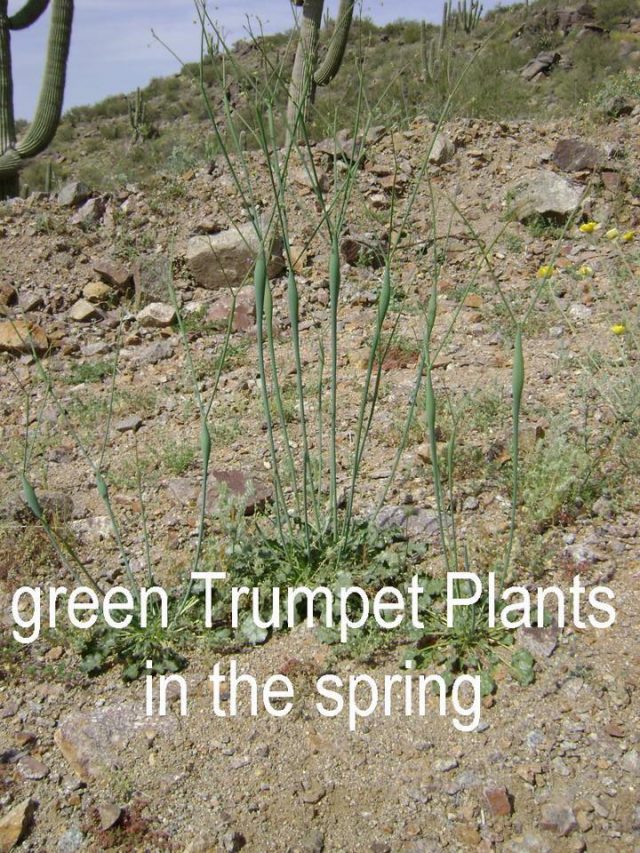Hey, this is Prospector Jess. I’ve got something for you today.
I had a request. We asked some questions about what was the most pressing question you had regarding desert prospecting. And the following question came up, and it’s a good one.
So, for desert prospecting, can vegetation be a clue to gold mineralization?
Let’s take a look. What we wanna look at is how gold-related minerals will impact plants, and how you can see what those results will be, so you can predict where gold might be located in the desert. Specifically in arid desert climates, there are minerals and the climate, and those interact to cause the plants to grow in a particular way. It’s about plant survival, survival of the fittest.
So what we’re looking at here is the kind of thing that stunts plant growth, or makes plants grow a certain way, or makes only certain kinds of plants survive, or some don’t survive at all. All those are indicators that you can look at and think about as you look for gold. Fun fact, some plants will actually concentrate gold in their leaves.
Did you know that? You can use it to find gold under some conditions. It’s being studied right now in Australia to see whether or not it can actually be a predictor that they can use to help locate gold locations over a broader area, pretty cool.
The adaptation of a plant species to arid desert climates is an important thing to look at. Specifically what we’re looking for are the kinds of plants that grow and how they grow, what they’re willing to tolerate more than what they’re willing to take in. In other words, we’re looking at the effects of toxicity versus nutrient value of the material around the plant. And that’ll be an indicator of gold, and you’ll see why in a second.
What are the key issues we wanna consider?
Well, toxicity, specifically heavy metals. Heavy metals basically have a property in that in any concentration, they can cause problems with plant growth, or rather they can kill plants. For example, copper, in a very small amount, can kill plants deader than a doornail. Ask me how I know, well, I had an accident once with a tree, and that’ll be enough said.
Any of the salts, or the halides, can cause problems, particularly chlorides, because plants don’t like chlorides. It builds up and causes problems with their plant internal workings, and so that basically can cause trouble and kill the plant. Especially the chlorides. Magnesium, an imbalance of magnesium and calcium. It’ll displace the calcium in the plant, and that in turn causes the plant to stunt its growth. So you wanna basically be low on magnesium, and high on calcium, not the other way around. If it is high in calcium, that’s the sign of a territory that’s high potential for gold. The problem is, it also means that certain kinds of plants won’t grow, and other kinds of plants will. And I’ll get into that in a second as well.
Concentrated metals, any metal that concentrates too much is a problem for plants in general.
Trace metals, a lot of trace metals are good for plants in very, very small, we’re talking parts per billion, parts per million kind of levels. They’re necessary, a lot of times, in the plant process of transpiration, et cetera, but they basically are used as part of the chemical reactions that go on inside the plant and not much more. And if you get them building up, the plant dies.
Sulfur, same situation. A little bit of sulfur goes a long way to make plants grow healthy and green. But if you get it too high, they die out. So you might look for cases where you see plants dying off, ’cause that might be an indicator of some pyrites and sulfides decaying in the region. See how that works?
So what you’re gonna be looking for.
You’re gonna be looking for rapid changes in plant density and quality. That’s an area that moves from seeing some brush, moving to no brush, and maybe even just flat sand, there’s nothing around, maybe a little dimple or some kind of metalized material flowing out of the side of a hill, some kind of a deposit. That would tell you the plants don’t grow there and it’s probably high in metals. Lower density usually means increased metals or excess salts.
So basically you’re looking at lower density of plants, they’re dying off, that means there’s more metals, more salts, therefore there’s more possibility that there might be a gold deposit nearby.
Leafy plants do not like any kind of metals. So you wanna be looking for that kind of situation where you’re seeing some stunted growth, even in an area that has lots of leafy vegetation that may not be in the desert, you may look for this kind of growth because it’s an indicator that there could be a metal deposit or a lode nearby.
Places that have calcium concentration layers, these are fun. It stunts the deeper rooting of plants because it forms a concrete, a false bedrock trap for gold. We call this caliche, and it basically is a very good sign, and you wanna look just above the caliche layer, just below the layer of riverbed that might have overlain that over the centuries. And that area right in there would act as a gold trap and concentrator. It’s gonna be hard to break out, though, you’re gonna need some jackhammers.
You’re looking at deader plant zones. So especially if there’s lode mineral deposits nearby with sulfur and copper, that’s gonna kill off any plants right near the lode itself, that’s an important clue. Obvious concentrated, or concreted clay and gravel layers, the structures, that’s that caliche stuff. Layered soil structures obstructing the depth of the roots, again, the plants get stunted off because they can’t make it through that layer, it’s too hard. And so they kind of grow in weird ways. Some plants or trees can go through that, cottonwoods would be one of them. But if they do, you might look at areas where they’ve broken through that material and break some of it apart yourself, and see if you can’t find some gold within that layer. Like I said, just above the caliche layer.
So we’re looking for things that form these limestone salts that have evaporated and formed concreted materials. Dolomitic calcium magnesium soils, caliche deposits, these are concrete-like lime minerals. Iron red clays are an important clue. Typically because a lot of the materials in the desert come from the deposit of old, eroded mafic minerals. So these are either lava flows that have gone through, volcanic action, or serpentine soils that have been eroded and decayed over time and turned bright red because of the way the iron oxidizes. And that’s an important thing, the redder the better. If you find deep red clays, those are good signs that you’re gonna find gold nearby.

Trumpet Plants Grow in Mineral Soils – Gold does too
Possibly more saline tolerant plant life. Bigger nuggets will usually drop out of a flood wash earlier than the final salt deposits, as they go down into the zones of lower and lower flow, slower and slower flow. It’s possible, I wouldn’t say it’s probable, but it is possible.
Take a look at the trumpet plant pictures Donald Knox just posted on the Hunting4Gold Facebook page too.
Often where bright spring flowers bloom. There’s a weird relationship between the colors of wildflowers in the desert and the metal and magnesium and calcium balance. That is some of the brightest flowers, and most unusual type of flowers, or very small scrub plants, and they bloom only for a period of one or two weeks a year, but when they do, it’s brilliant, brilliant deep purple, reds, blues, you name it. And the thing is, those flowers are telling you a little bit about the soil and the concentrations of soil down below. They typically make use of some of those metals and things like that in the process to make those brilliant colors.
Also, look for swales and dimples. This is a geologic feature that you’ll be looking for in the desert, and that is in the sands, and the dirts, and soils, you might find an area where there’s like a dimple, and then there’s dead vegetation right in the center toward the middle of that dimple.
That might tell you that there’s an old lode that died out down below the dimple, and any gold that was up above for hundreds of feet has now collapsed down into the soils below because of the erosion due to the formation of sulfuric acids from the decay of those pyrites. The gold that was in it would continue to concentrate down into a pile.
They call that a pocket placer, and it can be extremely lucrative to find one. So you wanna keep your eyes open for that kind of thing, where there’s no vegetation but there is a bump, there’s a dent.
Typically when there’s a dent, it’s gonna cup some water and there’s gonna be growth. But if there’s not, then, hmm, that looks suspicious. And that’s it for desert prospecting, can vegetation be a clue to gold mineralization.
Catch you later,
Prospector Jess.
